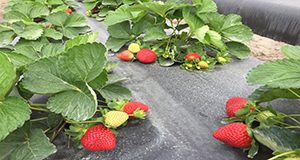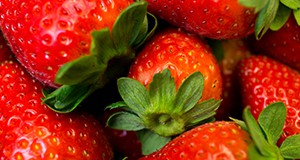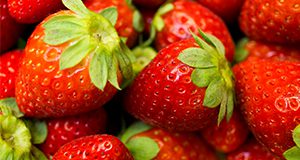Florida is the largest supplier of domestic winter strawberries in the United States, and labor is the largest cost item in the Florida strawberry production budget. Labor shortages are a major threat to the industry. This 3-page fact sheet written by Trina Biswas, Feng Wu, and Zhengfei Guan and published by the UF/IFAS Food and Resource Economics Department investigates growers’ labor demand and labor shortages based on a survey conducted in 2016.
https://edis.ifas.ufl.edu/fe1041
Tag: Zhengfei Guan
The Migration Pattern of Florida Seasonal Farmworkers
This 4-page fact sheet written by Zhengfei Guan, Berdikul Qushim, Feng Wu, and Alicia Whidden and published by the UF/IFAS Food and Resource Economics Department investigates the migration pattern of seasonal farmworkers based on a survey of strawberry harvesters conducted in 2016. In the survey, we asked workers where they were working and what crops they were working on before their current jobs. We also asked where they would migrate and what crops they would be working on after the strawberry harvest. We found that most workers were from Florida, Michigan, North Carolina, and California in that order, and that similar percentages of workers would migrate to these states after the job. Blueberries, tomatoes, and apples were the top three crops they were working on before and after their current jobs.
http://edis.ifas.ufl.edu/fe1040
The H-2A Program and Immigration Reform in the United States
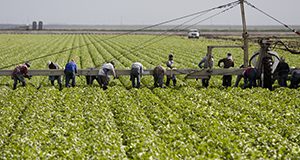
The Immigration and Nationality Act (INA) of 1952 authorized a nonimmigrant visa category, known as H-2, for foreign agricultural and nonagricultural workers to come to the United States and perform temporary services. To protect against disruptions in the farm labor supply, many growers are turning to the H-2A program to import foreign guest workers. This 5-page fact sheet written by Berdikul Qushim, Zhengfei Guan, and Fritz M. Roka and published by the UF/IFAS Food and Resource Economics Department explains the H-2A program and briefly discusses immigration reform.
http://edis.ifas.ufl.edu/fe1029
An Overview of the US Bell Pepper Industry
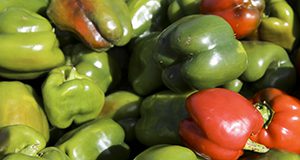
Bell pepper is one of the most widely cultivated vegetable crops in the world; it is widely grown all over the United States, and production of bell pepper has been a major economic contribution to the vegetable industry in Florida and California. This 4-page fact sheet written by Trina Biswas, Zhengfei Guan, and Feng Wu and published by the UF/IFAS Food and Resource Economics Department provides an overview of the US bell pepper industry, including production, prices, and trade.
http://edis.ifas.ufl.edu/fe1028
The US Tomato Industry: An Overview of Production and Trade
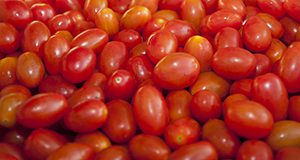
Tomatoes are one of the world's most consumed vegetable crops. In the United States, domestic production meets about 40% of the total domestic demand for fresh-market tomatoes, with the rest of the demand met by imports, mostly from Mexico and Canada. Since 2000, however, fresh tomato production in the United States has exhibited a steady declining trend. One major reason is the increased competition from Mexico. This 4-page fact sheet written by Zhengfei guan, Trina Biswas, and Feng Wu and published by the UF/IFAS Food and Resource Economics Department argues for US government measures to help the domestic tomato industry resolve labor shortages and encourage research and development of labor-saving technologies such as mechanical harvesting to make the US tomato industry more competitive and sustainable.
http://edis.ifas.ufl.edu/fe1027
Labor Requirements and Costs for Harvesting Tomatoes
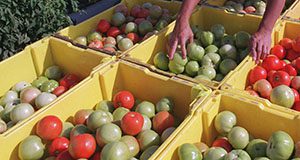
Florida accounts for 30% to 40% of all commercially produced fresh-market tomatoes in the United States. Almost every southern county in the state grows tomatoes. This 4-page fact sheet written by Zhengfei Guan, Feng Wu, and Steven Sargent and published by the UF/IFAS Food and Resource Economics Department presents the results of a 2015 study that examined the time it takes to harvest this important crop.
http://edis.ifas.ufl.edu/fe1026
Tomato Suspension Agreements and the Effects on Market Prices and Farm Revenue
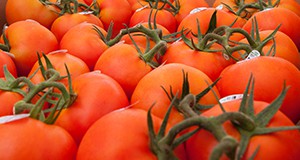
The production capacity of the US tomato industry has decreased significantly in the past decade. The US Department of Commerce and the Mexican tomato industry negotiated and signed several Suspension Agreements that set floor prices for imported Mexican fresh tomatoes to protect the US domestic industry. This 4-page article written by Zhengfei Guan, Dong Hee Suh, and Feng Wu and published by the UF/IFAS Food and Resource Economics Department provides a review of the history of the suspension agreements and an analysis of their effects on the US tomato industry.
http://edis.ifas.ufl.edu/fe1025
Florida Strawberry Growers Need More Early Yield to Improve Profitability
Fresh strawberries are a major US fruit crop. This 3-page fact sheet written by Feng Wu, Zhengfei Guan, and Vance Whitaker and published by the UF/IFAS Food and Resource Economics Department summarizes recent research on strawberry yield patterns and how they are predicted to affect profits. It is intended primarily for those involved in Extension, marketing, policy-making, production, and research related to the Florida strawberry industry. We believe that a better understanding of yield and price dynamics will be valuable to industry decision-makers.
http://edis.ifas.ufl.edu/fe1032
Growing Pomegranates in Florida: Establishment Costs and Production Practices
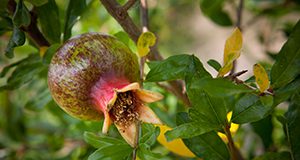
The study described in this 6-page fact sheet written by Feng Wu, Zhengfei Guan, and Gary Vallad and published by the UF/IFAS Food and Resource Economics Department provides a description of pomegranate production practices and preliminary cost estimates to inform investment and production decisions when growers look to diversify and grow pomegranate as a niche crop.
http://edis.ifas.ufl.edu/fe1024
Comparison of Labor Costs between Floridian and Mexican Strawberry Industries
Florida has the largest winter strawberry production in the United States. In recent years, Florida's industry has faced growing competition from Mexico. This 5-page fact sheet written by Feng Wu, Zhengfei Guan, and Melvin Garcia-Nazaraiega and published by the UF/IFAS Food and Resource Economics Department compares labor costs between Florida’s and Mexico’s strawberry industries.
http://edis.ifas.ufl.edu/fe1023
Import Growth and the Impact on the Florida Strawberry Industry
The United States is the second largest producer of strawberries after China, and Florida, along with California, accounts for about 98% of the total US production. In recent years, the US strawberry industry has become increasingly concerned with competition from Mexico. This 3-page fact sheet written by Zhengfei Guan, Dong Hee Suy, Hayk Khachatryan, and Feng Wu and published by the UF/IFAS Food and Resource Economics Department describes the impact of imported strawberries on the Florida strawberry industry and explains how the industry can adapt to meet the challenge.
http://edis.ifas.ufl.edu/fe1022
An Overview of Strawberry Production in Mexico
This 5-page fact sheet written by Feng Wu, Zhengfei Guan, J. Jaime Arana-Coronado and Melvin Garcia-Nazariega and published by the UF/IFAS Food and Resource Economics Department provides an overview of Mexican strawberry production with an emphasis on the production in Central Mexico.
http://edis.ifas.ufl.edu/fe1014
Florida Strawberry Production Costs and Trends
To help growers and policy makers understand how and why strawberry production costs have changed over time, this 5-page fact sheet written by Zhengfei Guan, Feng Wu, and Alicia Whidden and published by the UF/IFAS Food and Resource Economics Department presents cost information collected over a five-year period, analysis of the cost structure of Florida strawberries, and an examination of the trend of changing costs along with the factors underlying the trend.
http://edis.ifas.ufl.edu/fe1013
Conservation Reserve Program: Overview and Discussion

The Conservation Reserve Program, a governmental initiative with the goal of protecting the environment by retiring less productive but environmentally sensitive cropland from production, is by far the largest-scale, biggest-budgeted conservation program in the United States. The program has been a success, improving the land allocation of primary crop production and providing environmental benefits, but it is currently confronted with government budget cuts, and some farmers are reluctant to participate. This 5-page fact sheet written by Juhyun Oh and Zhengfei Guan and published by the Food and Resource Economics Department provides an overview of the Conservation Reserve Program and discusses relevant issues for Florida.
http://edis.ifas.ufl.edu/fe973
United States Biofuel Policies: Overview and Discussion

Governments at different levels in the United States have introduced various programs to promote alternative and renewable energies, reduce greenhouse gas emissions, and improve energy security. Some of these policy initiatives include mandates and tax credits to encourage the production of biofuels. As governmental efforts to promote renewable fuels as alternative sources of energy have evolved from subsidization to mandate, the production of biofuels has dramatically increased. The expansion of the mandate may contribute to reducing greenhouse gas emissions, but biofuels may be technically, economically, and environmentally inefficient. This 4-page fact sheet written by Zhengfei Guan and Juhyun Oh and published by the Food and Resource Economics Department reviews and discusses current US biofuel policies and explores potential outcomes.
http://edis.ifas.ufl.edu/fe974
Top Challenges Facing the Florida Strawberry Industry: Insights from a Comprehensive Industry Survey
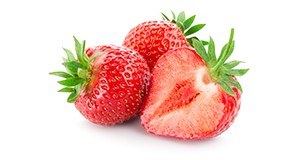
Florida is the largest supplier of winter strawberries in the United States and the second largest overall after California. The farm-gate value of Florida strawberries is approximately US$400 million and the total economic contribution of the industry is estimated at about US$1 billion. Even so, over the last few years, the Florida strawberry industry has faced many challenges. In 2012, Florida production was down by 20% compared to the previous year. The record level of imports of strawberries from Mexico deeply depressed the market, causing a market crash at the peak season of the Florida production. Decreased revenues coupled with increased production costs have caused significant losses to the Florida industry. In this three-page article, Zhengfei Guan, Feng Wu, and Alicia Whidden investigate Florida growers’ perceptions of various threats and challenges and discuss those threats that should be dealt with as high priority. Published by the UF Food and Resource Economics Department.
edis.ifas.ufl.edu/fe972
An Overview of the US and Mexico Strawberry Industries

The statistics of the Food and Agriculture Organization of the United Nations indicate that world production of strawberries has exceeded 4 million metric tons since 2007. With a total production of 1.4 million tons (3 billion pounds) in 2012, the United States is the largest producer among countries where statistical data are available, accounting for about 30% of the world supply. Production in Mexico increased from 140 thousand tons to 360 thousand tons, making Mexico the second-largest strawberry producer in the world. This four-page fact sheet written by Feng Wu, Zhengfei Guan, and Alicia Whidden and published by the UF Food and Resource Economics Department provides an overview of the US and Mexican strawberry industries, paying special attention to the trade relations between the two countries. (Photo credit: anna1311/istock/Thinkstock)
edis.ifas.ufl.edu/fe971
Florida Strawberry Producers' Experiences with Anthracose and Botrytis Fruit Rot, and Producers' Use of the Strawberry Advisory System
 Florida’s producers use fungicides to manage anthracnose and botrytis fruit rot diseases, which find favorable growth conditions in Florida’s climate and can reduce strawberry yields and profits. The Strawberry Advisory System (SAS) uses information about weather conditions and user-entered information about past fungicide applications to evaluate the potential spread of these diseases in strawberry fields. If the risk of disease spread is low, no fungicide application is recommended, allowing producers to save on fungicide application costs. In this study, we summarize the results of a 2012/2013 survey of strawberry producers, and focus on the questions, How significant is the impact of anthracnose and botrytis on Florida strawberry producers’ yields? What are the typical fungicide application frequencies used by the producers? What percent of strawberry producers use SAS? and Are there any effects of SAS subscription on producers’ fungicide application? This 4-page fact sheet was written by Tatiana Borisova, Zhengfei Guan, Ekaterina Vorotnikova, Natalia Peres, and John VanSickle, and published by the UF Department of Food and Resource Economics, October 2014.
Florida’s producers use fungicides to manage anthracnose and botrytis fruit rot diseases, which find favorable growth conditions in Florida’s climate and can reduce strawberry yields and profits. The Strawberry Advisory System (SAS) uses information about weather conditions and user-entered information about past fungicide applications to evaluate the potential spread of these diseases in strawberry fields. If the risk of disease spread is low, no fungicide application is recommended, allowing producers to save on fungicide application costs. In this study, we summarize the results of a 2012/2013 survey of strawberry producers, and focus on the questions, How significant is the impact of anthracnose and botrytis on Florida strawberry producers’ yields? What are the typical fungicide application frequencies used by the producers? What percent of strawberry producers use SAS? and Are there any effects of SAS subscription on producers’ fungicide application? This 4-page fact sheet was written by Tatiana Borisova, Zhengfei Guan, Ekaterina Vorotnikova, Natalia Peres, and John VanSickle, and published by the UF Department of Food and Resource Economics, October 2014.
http://edis.ifas.ufl.edu/fe957
Regulatory and Market Risk Factors and the Emissions Reduction Potential for Energy Intensive Firms (FE919)
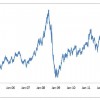 In the last decade, one of the major global environmental concerns has been greenhouse gas emissions. As part of the political debate over climate change, various policy initiatives are being proposed. Energy intensive firms that emit large amounts of greenhouse gases (e.g., floriculture or nursery firms with heated greenhouses) will be operating in an environment of high regulatory and market uncertainties in the coming years. This 3-page fact sheet presents a brief introduction of the regulatory and market risks faced by energy intensive firms and a case study of emissions reduction potential in the horticulture industry. Written by Zhengfei Guan, and published by the UF Department of Food and Resource Economics, March 2013.
In the last decade, one of the major global environmental concerns has been greenhouse gas emissions. As part of the political debate over climate change, various policy initiatives are being proposed. Energy intensive firms that emit large amounts of greenhouse gases (e.g., floriculture or nursery firms with heated greenhouses) will be operating in an environment of high regulatory and market uncertainties in the coming years. This 3-page fact sheet presents a brief introduction of the regulatory and market risks faced by energy intensive firms and a case study of emissions reduction potential in the horticulture industry. Written by Zhengfei Guan, and published by the UF Department of Food and Resource Economics, March 2013.
http://edis.ifas.ufl.edu/fe919
